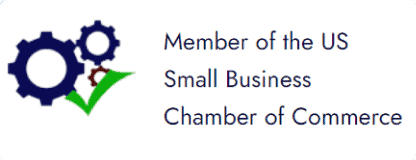What do the codes in Box 12 on my W-2 mean?

What do the codes in Box 12 on my W-2 mean? This article focuses on what the codes in Box 12 on Form W-2 mean. Reading your Form W-2 can be tricky and knowing what these Box 12 codes on the W-2 mean is very important. This article is going to walk you through all […]
How to read your W-2 Form

How to read your W-2 Form This is a guide on how to read your W-2 form. Preparing W-2 forms for filing with the Social Security Administration can be tricky. This article will help: Employer seeking to fill out the forms correctly. Employees trying to understand the numbers reported on their W-2. It will also […]
Payroll Services for the Beauty Industry Guide

Payroll Services for the Beauty Industry Guide This comprehensive guide to payroll services for the beauty industry is designed to help owners of barbershops, nail studios, hair salons, spas and massage parlors understand the ins-and-outs of payroll requirements. Additionally, you can also turn to this guide for insights on setting up payroll services for small […]
How to read your pay stub

How to read your pay stub “How to read your pay stub” is easy-read guide to help you learn everything you need to know about the information presented in your pay stub each pay period. That includes: The difference between a pay stub and a check Gross pay vs net pay What taxes are withheld, […]
Perks of paperless payroll

Perks of paperless payroll When it comes to doing the best you can for the environment while also building a successful business, sometimes the key is to find areas were you can cut out the use of paper. Payroll is definitely one of them. Paperless payroll offers plenty of benefits that will not only help […]
2018 Withholding Tables Now Available
2018 Withholding Tables Now Available Taxpayers Could See Paycheck Changes by February This article first appeared on the IRS website: www.irs.gov. The updated 2018 withholding tables now available. Net pay will change. WASHINGTON — The Internal Revenue Service has released Notice 1036, which updates the income-tax withholding tables for 2018 reflecting changes made by the […]
How to switch payroll providers smoothly
How to switch payroll providers smoothly Do you feel trapped in your payroll service and find yourself wondering how to switch payroll providers smoothly? Well, the old answer to that question used to be “you can’t.” Switching payroll providers used to mean having to manually track down and take all critical information–such as sensitive info belonging […]
How to minimize taxes on 401(k)
How to minimize taxes on 401(k)’s Learning how to minimize taxes on 401(k) is an important part of retirement planning. If seniors aren’t careful, they can push themselves into higher tax brackets and end up owing Uncle Sam more money than was really necessary. There’s no way to dodge the tax collector completely. But the […]
Full-service payroll vs in-house
Full service payroll vs in-house Always wondered what the big difference is between full service payroll vs in-house is? Well one of the biggest difference is that In-house processing is as easy as DIY. DYI, unless you’re a jack-of-all-trades or an expert, usually isn’t that simple. In full service, all payroll processing, direct deposit and […]
How to make payroll profitable [for CPA firms]
How to make payroll profitable [for CPA firms] Ever wonder how to make payroll profitable? Well if you’re the proud owner of a CPA firm, that’s probably crossed your mind more than once. And to be fair, payroll, to many CPA firms is a complementary product that just happens to come with accounting. Unfortunately, payroll […]



